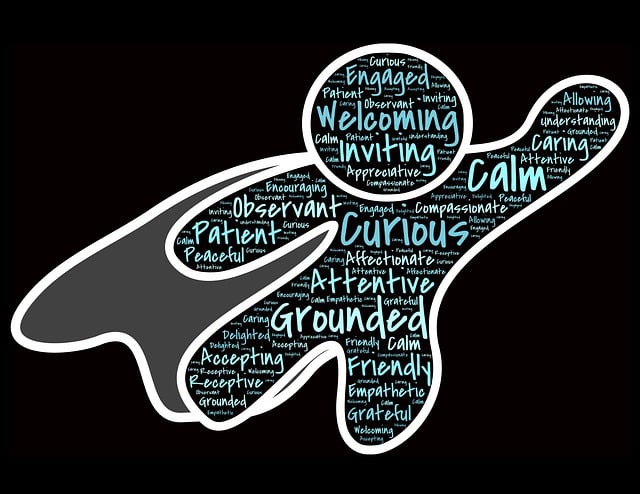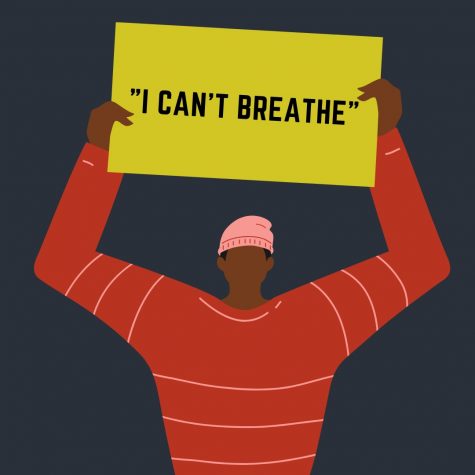SKEPTICAL SCIENCE SUNDAY: Five Mythical “Cures” for Autism (Based On Fake Science)
April 1, 2018
A while ago, I discussed the popular myth that autism is caused by vaccines. The uptick in autism diagnosis over the past few decades has made the disorder an easy target for fearmongering and pseudoscience, and vaccines aren’t the only scapegoats taking the blame. Everything from postpartum depression to intestinal yeast has been cited as a factor in the development of autism, with several niche groups of deluded mothers touting their “miracle cures” for these unproven theories of origin. (For some reason, it’s nearly always the mothers.)
In honor of Autism Awareness Month, let’s raise some awareness by looking at five therapies for autism, the false premises that inspired them, and the real harm they can do to autistic children and adults.
-
Holding Therapy
An age-old myth in the realm of autism research is the concept of “refrigerator mothers” – cold and distant parents whose lack of warmth and affection results in the reduced social reciprocity of their autistic children. In reality, the relationship most likely goes the other way: children with autism resist physical affection due to discomfort, leading to reduced parental attachment. It is the lack of social reciprocity that causes the lack of warmth, not the other way around.
However, despite a significant lack of evidence in support of the hypothesis, some folk wisdom still considers autism to be a result of poor maternal attachment. Following this logic, some parents have taken to using holding therapy in an effort to “repair” the parent-child bond. Holding therapy is similar to traditional displays of affection, such as hugging, but with the addition of physical force to maintain eye contact until the child stops resisting. The goal is to deliberately make the child uncomfortable until they “surrender” and make eye contact with their mother, supposedly resulting in successful attachment.
For a child with autism, the unwanted sensory experience of being held in this way is quite distressing. The American Psychological Association does not support the use of holding therapy as a treatment for autism, due to the risk of distress in the child and the absence of evidence for its effectiveness. Without clear evidence that holding therapy can improve quality of life for children with autism, the discomfort and fear they may experience during the therapy is an unnecessary risk. And since the therapy itself is based on an unfounded premise, it’s safe to say that its value just isn’t there.
-
Gluten-Free Diets
Ah, gluten. The compound you probably hadn’t heard of less than a decade ago is now just about everywhere, from medical journals to cereal boxes to My Natural Life. While Celiac disease is a very real issue that makes it impossible for some people to eat gluten without serious health effects, for the average person, going gluten-free doesn’t do much except make bread products taste a lot worse. However, that hasn’t stopped the fad from taking off as everything from a health trend to a “natural medicine” paradigm.
A blog post on Talk About Curing Autism (cringe) explains that an “autism diet” free of gluten, casein (a protein found in dairy products), and soy can improve behavioral symptoms in a vast majority of children with autism. (Interestingly enough, the link to research which supposedly backs up this claim is currently broken.) Considering the prevalence of food-related issues in children with autism, it makes sense that parents might look to diet as a possible factor, but removing gluten and casein from the diet to alleviate behavioral symptoms doesn’t seem to be effective. While some preliminary research does indicate that gluten may play a role in autism and its symptoms, the practicality of eliminating gluten as a treatment or “cure” does not appear to be demonstrated in any high-quality, well-controlled studies.
One of the most common food-related issues in children with autism is picky eating, or a very limited preference for foods of a particular color, texture, or food group. Preferences for bland, beige-colored carbohydrates are common – incidentally, foods that often contain gluten. If you have a child who refuses to eat anything other than peanut butter sandwiches, is it really a good idea to try to put them on a gluten-free diet? Probably not. In addition to being incredibly difficult and expensive, going gluten-free can have all sorts of unintended consequences, including a variety of nutritional deficiencies and even Type II diabetes. Unless a legitimate medical reason exists for eliminating gluten, the risks are just too great, especially for a child.
-
Chelation
In addition to gluten, another favorite scapegoat of the alt-med crowd is heavy metals. I touched on this a little in my post on detoxing, but in this case, the nonsense goes far beyond detox kits and juice cleanses. Among naturopathic “doctors,” who practice a harmful form of pseudoscientific medicine, heavy metal toxicity is a frequently cited cause of disease. In the case of autism, the mercury found in vaccines supposedly “poisons” the body and somehow leads to its development. In order to alleviate symptoms, the toxins must be eliminated. But how?
The treatment of choice for heavy-metal-related illnesses appears to be chelation therapy. Once used as a legitimate way to remove actual toxic levels of heavy metals from the blood, chelation involves the ingestion of an organic compound known as EDTA, which binds to metallic molecules and assists the body’s natural detoxification mechanisms. Naturopaths love prescribing this treatment to treat anything from atherosclerosis to cancer. After all, if heavy metals are the root cause of disease, it makes sense that removing them would cure the disease, right?
However, in situations where heavy metals are not actually at play, chelation therapy can be harmful. EDTA chelates every metallic compound in the body, not just the toxic ones. Consuming EDTA can result in kidney damage, decreased blood clotting, anemia, hypoglycemia, and deficiencies in other key nutrients like calcium and zinc. In the case of acute mercury poisoning, these risks might be worth the alternative of certain death. But in the case of autism, the potential benefits just aren’t there. Since autism is decidedly not caused by mercury poisoning, treating it as though it is makes absolutely no sense. When the treatment is performed by someone with no medical training and no understanding of the potential harms, such side effects may be deadly.
-
“Miracle Mineral Solution”
Perhaps one of the most appalling cases of autism pseudoscience is the marketing of “Miracle Mineral Solution,” or MMS, as a cure-all for just about any kind of pathogen. Fungus, bacteria, viruses…it kills them all, and can eliminate a wide variety of diseases as a result. The problem is, it really doesn’t do that. All MMS is is a solution of 28% sodium chlorite in distilled water – in layman’s terms, industrial strength bleach.
Anyone with a basic grasp of medical science can see the problem here. While bleach can kill a wide variety of pathogens living on surfaces, its cleansing effects do not apply to pathogens already in the body. Drinking bleach, even in diluted quantities low enough to not be fatal, is incredibly harmful to the stomach, intestines, and a host of other organs. There is no evidence anywhere that it has any health benefit whatsoever. And yet, it persists, touted as a “miracle cure” for autism by delusional parents.
A growing community of parents who believe their children’s autism is caused by “parasites” advocate the use of MMS enemas as a treatment. I’ll repeat that: these parents are giving their children bleach enemas in an attempt to cure their autism. This would be ridiculous even if autism were caused by parasites – which, surprise surprise, it isn’t. But thanks to some rampant misinformation and the advice of non-experts, many of the parents in question continue to delude themselves.
Recently, a Facebook group was discovered where mothers share photos of “parasites” leaving their children’s bodies (Warning: The link contains graphic material). According to several medical experts, the photos do not depict parasites, but the children’s destroyed bowel linings which have been bleached off by the enemas. And yet, the procedure continues to be legal in the UK and poorly regulated in the US. A Change.org petition calls for the US government to create a specific law banning the practice, since apparently generic child abuse and drug regulation laws are no longer sufficient in this case. We can only hope that all the negative press will eventually dispel the rumor that MMS does anything other than poison children.
-
Applied Behavior Analysis
Although it’s difficult to find anything much worse than feeding kids bleach, there is one more autism treatment whose harm primarily comes from how widespread and trusted it is. While it rightfully does not rely on a “biomedical” model of autism, it does employ outdated and inaccurate ideas about what autism is and how it affects children. It’s called Applied Behavior Analysis, or ABA, and it’s one of the most widely accepted models for the treatment of autism symptoms.
Unlike many of the biomedical treatments listed above, ABA does not attempt to “cure” autism directly. It makes no claims about causation, accepting the scientific consensus that autism is mostly genetically based. Its primary goal is to alleviate the behaviors associated with autism, ideally making children with autism “indistinguishable from their peers.” On the surface, this sounds like a great idea. By reducing “problem” behaviors, the therapy can help children (and adults) with autism to function socially just like anyone else would. However, the actual mechanism of doing so is highly controversial.
The most intensive forms of ABA focus heavily on the idea of compliance – essentially, using a system of punishments and rewards to force a desired behavior or punish an unwanted one. Unlike the kinds of punishments and rewards used for non-autistic children, however, ABA does not take no for an answer, continuing to demand certain behaviors even when the child is visibly distressed. Some therapists even use electric shocks as a means to discourage behaviors. In any other child, this would be considered abusive; but for children with autism, it’s called “therapy.”
Although many parents report that their children made significant progress with ABA, it’s difficult to tell whether this progress is really evidence of success. The parents of Norrin, a 10-year-old boy with autism, are beginning to question the efficacy of their son’s ABA therapy. His mother recounts how he will approach people on the street and ask their name, but not wait around for the answer. “He… knows to do his part,” she says, but it appears that he doesn’t really understand the meaning of what he is saying. He may be able to mimic a non-autistic person, but his autism is still very real, and it doesn’t look like the ABA therapy has done much to change that.
While Norrin’s story is compelling, it’s still anecdotal. So what does the empirical evidence say? Unfortunately, not much. Much like with the above therapies, many studies of effectiveness for ABA are poorly designed and do not produce good evidence. However, a recent study suggests that the repetitive teaching used by ABA therapists may not be ideal for children with autism, who frequently have difficulty generalizing acquired skills to new situations. A child may, for example, learn to say “May I please have some more?” in a therapy session, but would not consider saying the same thing to a parent at the dinner table.
Many adults with autism have come out against the practice of ABA, suggesting that its goal of making autistic children less autistic is misguided and harmful. Some claim that forcing behaviors such as making eye contact and punishing behaviors such as hand-flapping doesn’t actually benefit the child, and only serves to make them less embarrassing in public. A child who flaps his hands when he’s nervous or looks over a person’s shoulder when she’s speaking to them isn’t necessarily any less competent than their peers – they just have a different way of communicating. The premises behind ABA stigmatize a lot of harmless behaviors associated with autism, and the therapy itself essentially tries to “train” autism out of a child.
The Alternative? Just Be A Parent
A better alternative to any of the therapies listed above may be for parents to simply model and explain specific social situations to their children, much like parents would teach any non-autistic child a new concept. The difference here is that children with autism typically need more in-depth explanations of things non-autistic children tend to learn indirectly, such as saying hello and asking someone’s name. Parents might work with teachers or therapists to integrate social skills development into the child’s academic plan and involve peers in the process. The most important thing for parents and educators to understand is that a child with autism thinks about things differently from a child without autism. Only by understanding how each child thinks, accepting their autism as a part of who they are, and helping them to learn how to interact with the world around them can parents truly make a difference in the lives of their autistic children. It’s not about identifying the cause, finding a cure, or making an autistic child look “normal.” It’s about making sure that every person can live a happy, successful, and functional life, no matter what abilities or disabilities they may have.
















Autism therapy Gold Coast • Dec 3, 2021 at 4:37 am
I love the points you mentioned. Children who play outside regularly gain motor skills, including coordination, balance and agility. Play in natural environments encourages language and cooperative skills. Outdoor plays at Autism therapy Gold Coast can improve awareness, reasoning and observational skills
sherica Grant • Nov 25, 2020 at 9:19 am
My son has been suffering from Autism for the past 2years, I was given some tablets at the hospital but I refused to give it to him, They said he has to be on it for life, so I don’t want him to take drugs everyday for life. No point in taking medicine everyday when u won’t get cure from it and I was advice to seek for natural herbal cure, after some time I found dr joseph is the most trustful herbalist that have herbs to cure wicked disease or virus,I emailed dr joseph, after 2weeks been his patient he cured my son Autism with his herbal. I only used his natural herbs for two weeks. and it was 100% cured. My son is not Autism patient anymore. I’m happy about it. he finally got cured out of this mess that has been in my body for 2years. I also recommend you if you’re living with (Autism) or any other disease or virus I also want you to be free to contact dr joseph with the email attached to my post. [email protected]